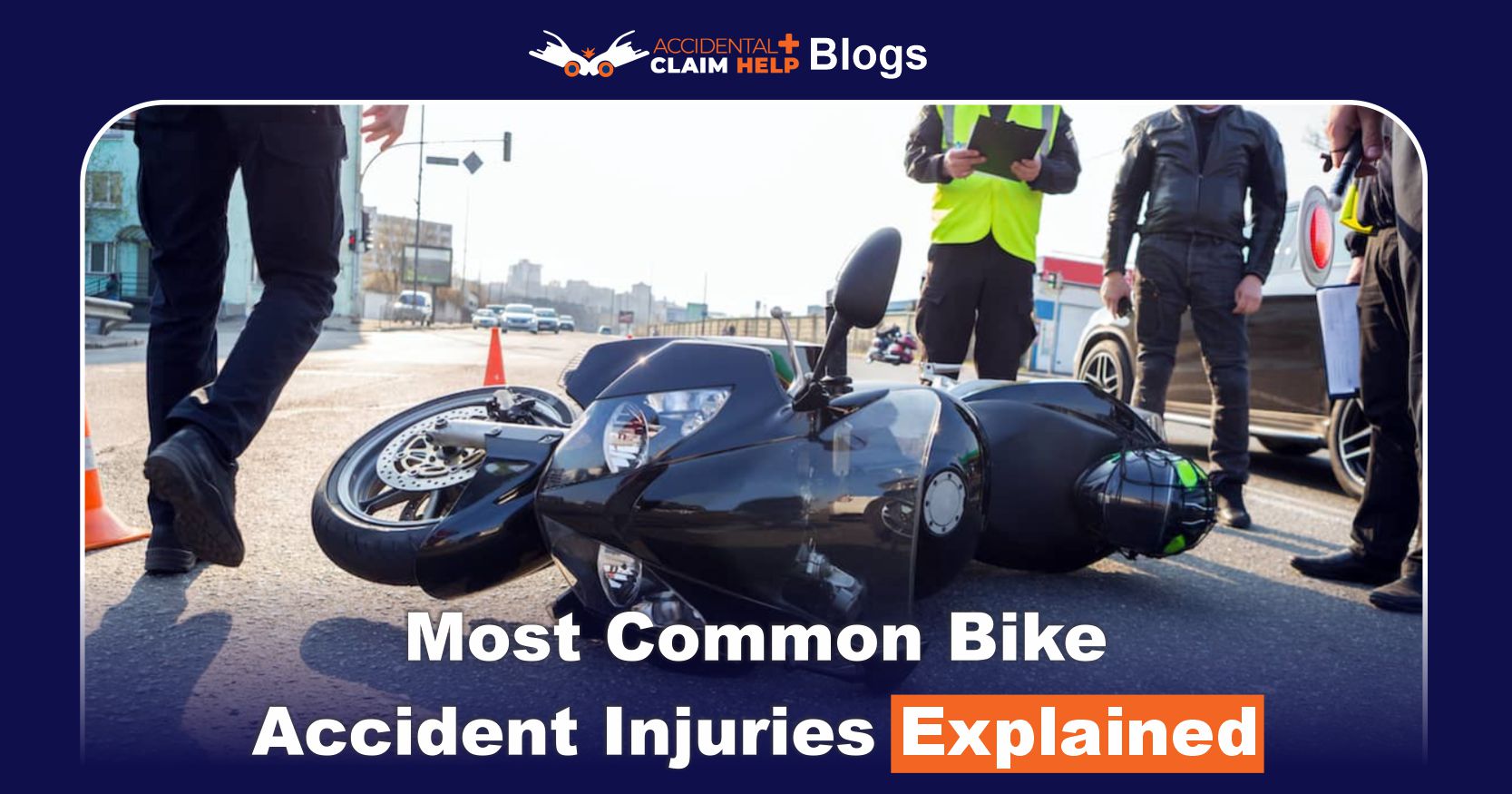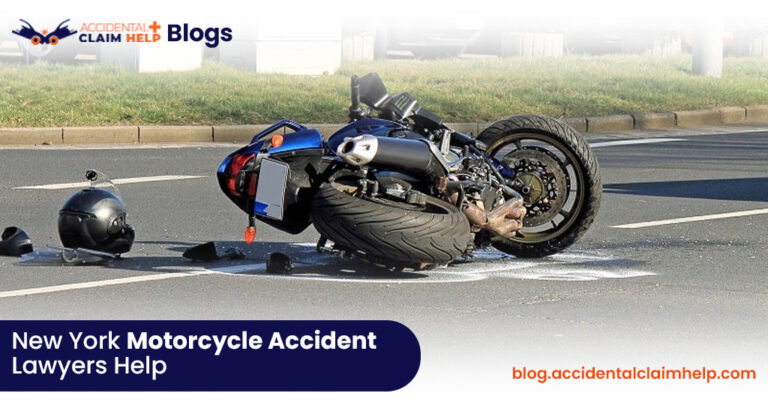Most Common Bike Accident Injuries Explained
Bike crashes – whether involving bicycles or motorcycles – can cause a wide range of injuries. In the U.S., tens of thousands of riders end up in emergency care each year after a bike crash. Even non-fatal crashes can be serious, as the most common injuries in these cases are related to the neck, spine, and brain. In short, bike accidents can inflict anything from scrapes and bruises to life-threatening trauma.
Bike and motorcycle crashes share many injury types, though motorcyclists often face higher-speed impacts (and therefore more severe trauma), while bicyclists may more often suffer falls and road abrasion. Below, we’ll review the most frequent injuries seen in U.S. bike accidents, both on bicycles and motorcycles. In many cases, wearing proper gear (like helmets and pads) and riding defensively can reduce the harm from a crash.
Head and Brain Injuries
A head injury is one of the most dangerous consequences of a bike crash. Unprotected bicyclists and motorcyclists who fall or are struck can sustain concussions, traumatic brain injuries (TBI), skull fractures, and other trauma. Head injuries range from mild (like a concussion) to severe (such as brain hemorrhage), and in the worst crashes, a head injury can be fatal. Studies show that 70–80% of fatal bicycle crashes involve head injury, and even a third of nonfatal bicycle injuries affect the head.

Wearing a helmet is critical. Bicycle helmets can slash the risk of head and brain trauma by 65–70%. For motorcyclists, helmets are also lifesavers, reducing motorcycle brain injuries by about 67%. In crashes where riders weren’t wearing helmets, nearly all fatal head traumas occur. Thus, helmets can make the difference between a minor bump and a devastating TBI.
Common head injuries include:
- Concussion: A mild TBI causing headache, confusion, or dizziness. Riders may feel dazed or lose consciousness briefly. Concussions can have lasting effects if untreated.
- Traumatic Brain Injury (TBI): More severe brain damage such as bleeding or bruising inside the skull. Symptoms include loss of consciousness, amnesia, seizures, or mood changes. TBIs can cause permanent disability.
- Skull fracture: A break in one of the skull bones, which can penetrate the brain and lead to bleeding or swelling. These can be life-threatening.
- Other head trauma: Includes scalp lacerations or deep cuts from impact. Even if a helmet protects the skull, high-speed accidents can cause violent jolts, resulting in brain swelling or hemorrhage.
Because head injuries are so common, anyone involved in a crash who has a bump on the head, nausea, confusion, or loss of balance should get checked right away. Even if you feel “okay,” an unseen brain injury can worsen if untreated.
Neck and Spinal Injuries
Injuries to the neck, spine, and spinal cord are another frequent and serious category. Whiplash-like forces in a crash can sprain or tear neck muscles and ligaments. More dangerously, the spinal column or cord can be fractured or bruised, potentially leading to paralysis. Neck and spine injuries are among the most common in bike crashes.
The spine can suffer devastating injuries in higher-speed crashes. Motorcyclist data indicate that spinal trauma often causes conditions like quadriplegia (total paralysis from the neck down). Car accidents hitting a cyclist from behind, or a rider thrown off a bike, can “whip” the neck violently or break vertebrae. Such injuries may cause long-term problems like chronic pain, loss of sensation, or respiratory issues.
Facial, Dental, and Eye Injuries
Crashes often involve injuries to the face. A fall or collision can fracture facial bones, damage the eyes, or knock out teeth. Common examples include broken noses and cheekbones, fractured jaw, and lacerations on the face. Motorcyclists frequently suffer broken noses, jawbones, and teeth. Similarly, bicycle accidents can send a rider’s face into handlebars or pavement.
Dental injuries are also common – riders can chip, loosen, or lose teeth in a crash. Such injuries may require urgent dental care and can lead to lasting issues if ignored. Eye injuries can occur from impact or flying debris like branches or road spray. Riders should always wear eye protection (goggles or glasses) to shield against branches, insects, and gravel.
Road Rash and Soft Tissue Injuries
“Road rash” refers to skin abrasions when a rider slides on pavement. These scrapes can be mild or severe. Even a low-speed fall can cause burn-like abrasions that may require surgical care. Serious road rash can become infected, cause nerve damage, or require skin grafts.
Beyond scrapes, crashes cause soft-tissue injuries to muscles, tendons, and ligaments. A cyclist who braces a fall with an outstretched arm may sprain a wrist or shoulder; knees and hips can twist painfully. Bruising (contusions) is very common, as the body absorbs impact. If you feel unusual weakness, numbness, or swelling after a crash, it’s wise to get medical attention to rule out deeper injuries.
Broken Bones and Fractures
Fractures are among the most frequent nonfatal injuries in bike accidents. After head injuries, broken bones rank as the next most common serious injury. Bones can break when a rider is thrown from a bike, pinned under it, or struck by a vehicle.
Common fractures include:
- Clavicle (collarbone) fractures: Very common in cycling crashes, especially for bicyclists who fall onto their shoulder.
- Arm and wrist fractures: Cyclists often extend a hand to break a fall, resulting in forearm or wrist fractures.
- Leg fractures: A high-speed bike crash or being hit by a car can break the femur, tibia, fibula, or knee cap.
- Ankle and foot fractures: Twisting or direct impact can break the ankles or feet.
- Rib fractures: Crashing into the ground or another vehicle often breaks ribs, which can puncture underlying organs.
Almost any bone can break in a bike accident. Recovery time depends on the bone and break type. Some fractures heal with a cast alone, while others require surgery with rods, plates, or screws.
Internal Injuries
High-impact crashes can cause internal injuries that are not immediately visible. The force of a collision may bruise or tear internal organs and blood vessels.
Common internal injuries include:
- Internal bleeding: A violent crash can rupture organs or blood vessels, causing dangerous internal hemorrhage.
- Abdominal trauma: A handlebar or steering wheel impact can injure the organs or spine.
- Thoracic injuries: Blunt trauma to the chest can collapse a lung or tear tissue.
- Spinal cord compression: A cracked vertebra can pinch the spinal cord, causing paralysis or neuropathic symptoms.
Internal injuries often require emergency care, including surgery. Any rider involved in a major collision (especially if struck by a car) should be evaluated in a hospital.
Joint and Limb Injuries
Bike accidents can severely impact joints and soft tissues of the limbs. Riders may dislocate shoulders, elbows, knees, or hips when forced off a bike. Hitting the ground or being thrown forward often causes a shoulder to pop out of its socket. Such dislocations can lead to ligament tears or tendon damage.
Knee injuries are also common in bicyclists who crash forward: knees can scrape the pavement, bruise, or twist awkwardly. Pain and swelling could indicate torn ligaments or cartilage damage. Ankle and foot injuries can involve ligament sprains or tendon strains from twisting or impact. Hand and wrist pain is frequent too, as riders instinctively stretch out hands to break a fall.
Nerve injuries can also occur in limb trauma. A severe elbow or shoulder impact might bruise nerves, causing tingling or numbness down the arm. Similarly, dislocations or fractures can pinch nerves, creating a “pins-and-needles” sensation in hands, arms, or legs. Any persistent numbness or burning sensation after a crash may signal nerve injury and warrants prompt medical evaluation.
Preventive Measures
While bike crashes can cause severe harm, many injuries are preventable. Always wearing appropriate gear can dramatically reduce injury risk. Helmets prevent roughly 65–70% of head and brain injuries in bicyclists and a similar proportion for motorcyclists. Jackets, gloves, and padded clothing help protect skin and soft tissues. Visibility is crucial too – bright clothing and lights help drivers see riders. Lastly, following traffic laws and riding defensively can lower the chance of a crash occurring at all.







